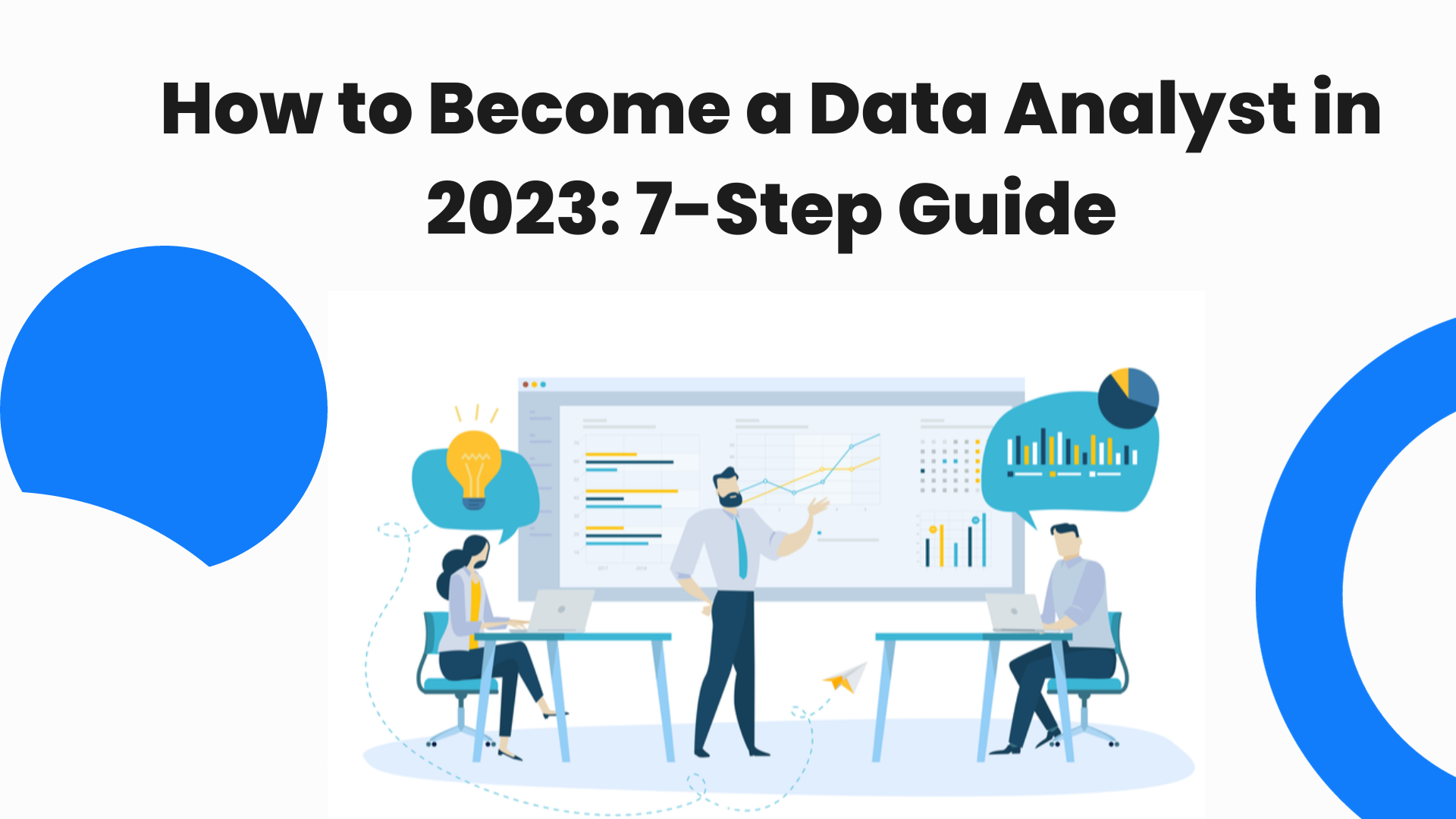How to Become a Data Analyst in 2023: 7-Step Guide
In the age of information, data has become a valuable commodity, and organizations across industries are relying on data analysts to derive meaningful insights. If you aspire to become a data analyst in 2023, this 7-step guide will help you navigate your path to success.
Step 1: Understand the Role of a Data Analyst
Before diving into the world of data analysis, it’s essential to understand the role and responsibilities of a data analyst. Data analysts are responsible for collecting, processing, and analyzing data to help organizations make informed decisions. They work with data to identify trends, create reports, and provide actionable recommendations.
Step 2: Acquire the Necessary Education
To kickstart your career as a data analyst, you’ll need a strong educational foundation. While some entry-level positions may accept candidates with a bachelor’s degree, many data analysts hold a bachelor’s or master’s degree in fields such as:
Statistics
Mathematics
Computer Science
Economics
Data Science
Consider pursuing relevant coursework or certifications in data analysis from platforms like Coursera, edX, or Udacity. These online courses can provide you with essential skills and knowledge to get started.
Step 3: Develop Technical Skills
Data analysis requires proficiency in various technical tools and programming languages. In 2023, the following technical skills are in high demand:
Programming Languages: Learn languages like Python and R, which are widely used for data analysis due to their extensive libraries and community support.
Data Manipulation: Gain expertise in libraries like Pandas for Python and dplyr for R, which allow you to clean, transform, and manipulate data effectively.
Data Visualization: Master data visualization tools like Tableau, Power BI, or Python’s Matplotlib and Seaborn for creating compelling visual representations of data.
Statistical Analysis: Understand statistical concepts and techniques to make sense of data, including hypothesis testing, regression analysis, and probability theory.
SQL: Learn Structured Query Language (SQL) for managing and extracting data from relational databases, a critical skill for data analysts.
Machine Learning: While not mandatory, having a basic understanding of machine learning algorithms can be a valuable asset.
Step 4: Gain Practical Experience
Practical experience is essential to becoming a proficient data analyst. You can gain this experience through:
Internships: Seek out internships or entry-level positions in data-related roles to apply your skills in a real-world setting.
Personal Projects: Create personal data analysis projects to showcase your abilities. You can use publicly available datasets or collect your own data.
Kaggle Competitions: Participate in data science competitions on platforms like Kaggle to tackle real-world problems and learn from the community.
Freelancing: Consider freelancing opportunities to work on data analysis projects for small businesses or startups.
Step 5: Build a Strong Portfolio
A portfolio is your visual resume, showcasing your data analysis projects and skills. Include a variety of projects that demonstrate your ability to solve diverse problems using data. Make sure your portfolio is well-organized and includes detailed explanations of your approach and the insights you gained from each project.
Step 6: Network and Stay Informed
Networking is crucial in the data analysis field. Attend industry conferences, webinars, and meetups to connect with professionals in the field. Join online communities and forums, such as LinkedIn groups or data science subreddits, to stay updated on the latest trends, tools, and job opportunities.
Additionally, stay informed about emerging technologies and methodologies in data analysis. In 2023, areas such as machine learning, artificial intelligence, and big data analytics will continue to evolve, and staying current is essential.
Step 7: Apply for Data Analyst Positions
With your education, technical skills, practical experience, and a strong portfolio, you’re ready to start applying for data analyst positions. Tailor your resume and cover letter to highlight your relevant skills and experiences. Be prepared for interviews that may include technical assessments, case studies, and behavioral questions.
Consider starting with entry-level positions such as “Junior Data Analyst” or “Data Analyst Intern” to gain more experience and then work your way up in the field.
In conclusion, becoming a data analyst in 2023 requires dedication, continuous learning, and a commitment to honing your technical skills. With the right education, practical experience, and networking, you can embark on a rewarding career in data analysis and contribute to data-driven decision-making in various industries. Remember that the field is constantly evolving, so stay curious and adaptable to remain competitive in this exciting profession.

Post Comment